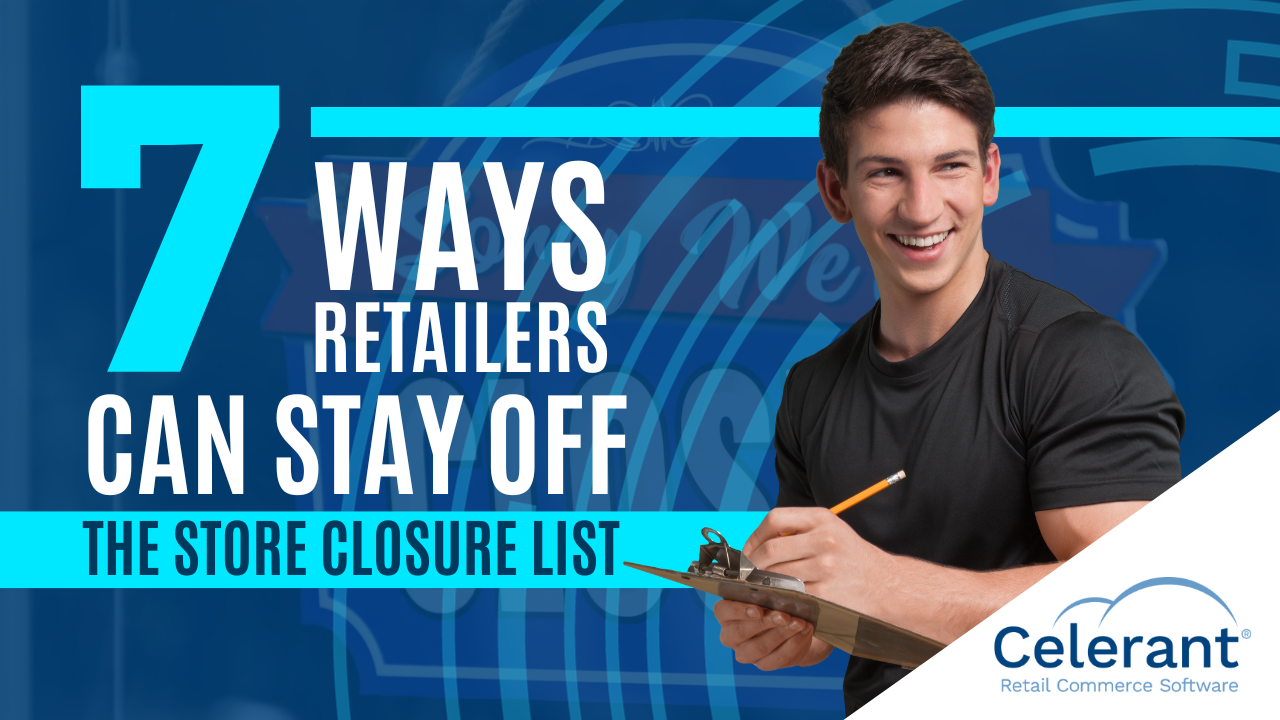Blog
7 Ways Retailers Can Stay Off The Store Closure List
July 6, 2017 / 5 minute read / By Zoya Naeem

Blog

In April, Swiss brokerage firm Credit Suisse released a report that sent shock waves through the retail universe. It predicted that more than 8600 brick and mortar stores could shutter before the end of 2017. That would make it the worst year on record for store closures. It’s the stuff of nightmares for retailers.
Whether or not you believe the Credit Suisse analysts are right, you can avoid being one of those stores — all it really takes is providing the experiences that today’s consumers demand. Movie theaters in the 1980s faced a similar environment when home video hit big. The industry feared that once people could rent and watch videos at home, nobody would pay to go to a theater and they would all go out of business.
Only that’s not quite what happened. Many did go out of business, just as many brick and mortar stores are likely to. But nimble theaters evolved and responded by providing new experiences that customers wanted and couldn’t replicate at home. That’s why going to a movie theater today is nothing like it was in 1981. If you want to stay off Credit Suisse’s list, you can’t have sticky floors, gum under your seats or burns in your film.
Here are some things you can do now that are the retail equivalent of adding digital surround sound, online seat reservation systems and digital projectors.
Omnichannel shoppers see no difference between your ecommerce and POS offerings and neither should you. Make every store’s inventory visible to online shoppers so that you can take advantage of the “buy online, pick-up in store” model. Integrated ecommerce and POS inventory management systems show real-time availability so consumers do not face unexpected out-of-stocks at brick and mortar locations. If an item is not available at the customer’s selected store, provide fast and free transfer from another store.
Every physical store should also double as a fulfillment center for web orders. This opens up every item in inventory to sales from any channel and reduces time in transit for ecommerce orders. Orders that are automatically routed to locations closest to customers can reach front doors faster than from a central warehouse, often overnight or within two days without incurring express shipping charges.
It’s official — mobile internet usage has surpassed desktop traffic. If your website does not display properly on mobile devices, you’re missing out on a huge number of consumers. But just displaying properly is no longer enough. Navigation, inventory visibility and checkout must all be optimized for mobile users. This has massive benefits for brick and mortar as well when customers on the go can locate items in your stores; they may even make purchases from inside a competitor’s location.
The long-time promise of just in time inventory management finally eliminated worries about out-of-stocks. Set minimum and maximum thresholds for SKUs and let your retail management platform automatically order the right amount of inventory from suppliers at the exact right moment. When you know every product you sell will be automatically replenished before it sells through, you do not have to keep as much inventory on hand and can open up shelf space for additional offerings likely to attract customers. You also don’t have to worry anymore about selling out on popular items and sending frustrated customers home empty handed.
One of the worst things that can happen in a store is when customers with intent to purchase leave upon seeing long checkout lines, or can’t find anyone to take their money. The in-store experience must be as smooth and easy as it is online — consumers are no longer willing to wait. Arm every employee with a tablet loaded with mobile POS software so they can complete transactions, look up inventory, and place customer orders from anywhere in the store.
Target individual customer segments with the offers most likely to appeal to them through marketing automation. Integrate online and POS customer data to segment personas effectively and send promotions that are personalized to known preferences and likely to bring customers into stores. Specific behaviors should trigger customized messages, and look for opportunities to leverage ecommerce and in-store offerings. For example, an abandoned shopping cart may trigger a reminder message that could also include a note like, “this item is also available at your nearest store, would you like us to hold it for you?”
Drop shipping today does not resemble what it looked like 15 years ago. Many vendors offer drop shipping that can use your branding and fulfill lightning fast. Offering items for sale that you do not have hold in inventory opens up your website to endless opportunities and it can also be integrated into “buy online, pick up in store.” Give customers the option of having the item sent to their homes or to their nearest store with no shipping charges. If they select a store, simply have the vendor pack the item along with your next regular order.
The next time you see a headline about a retailer closing stores, refer back to this list. It will become clear that one of the major reasons the merchant is in trouble is because it is not responding quickly enough to the changing demands of modern consumers. Provide the experiences today’s empowered shoppers expect and you will have much less to fear from predictions of impending doom.
Check out our blog titled 5 Ways Retailers Can Save Time And Sell More for even more ways to improve your retail business.